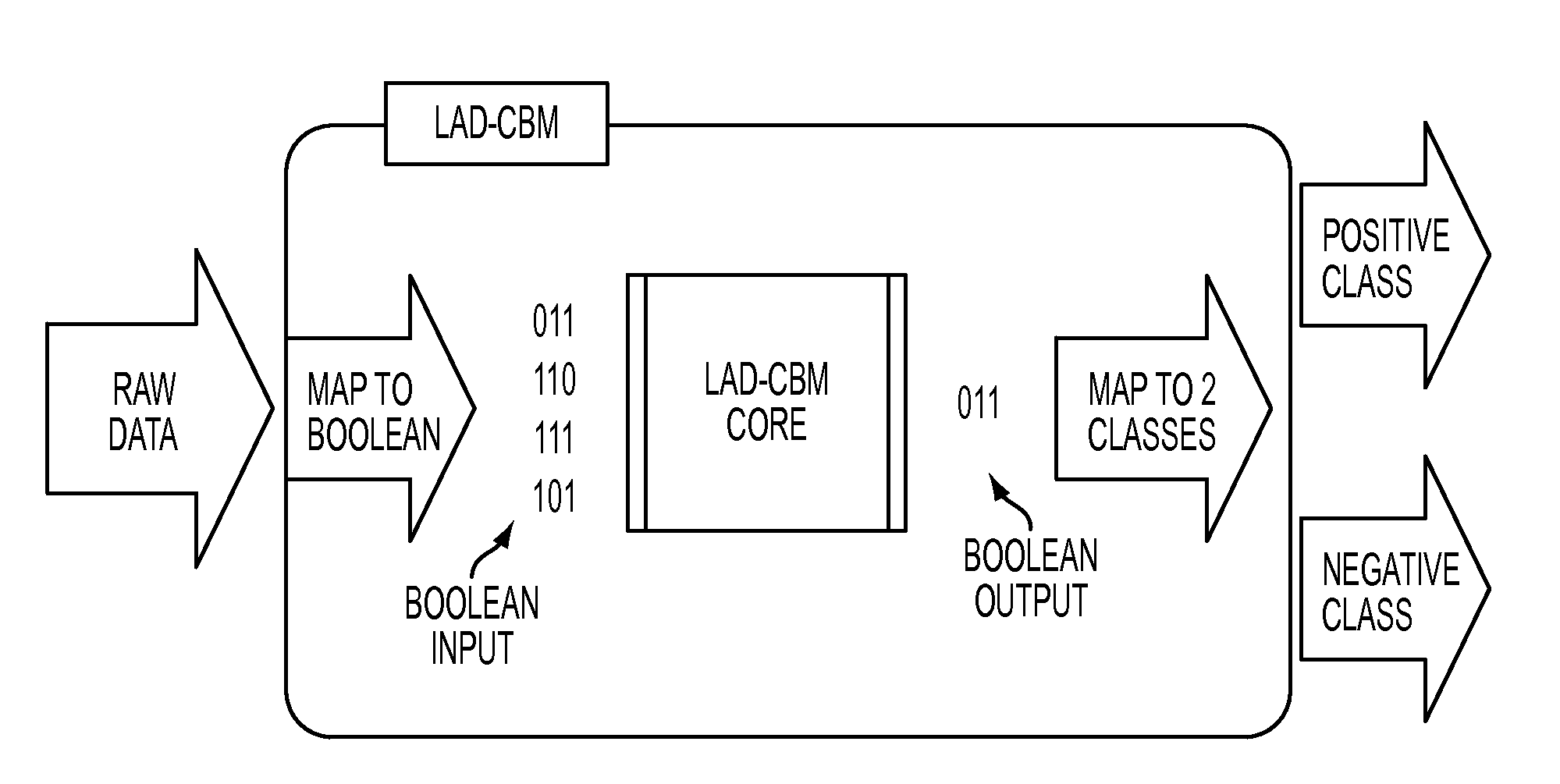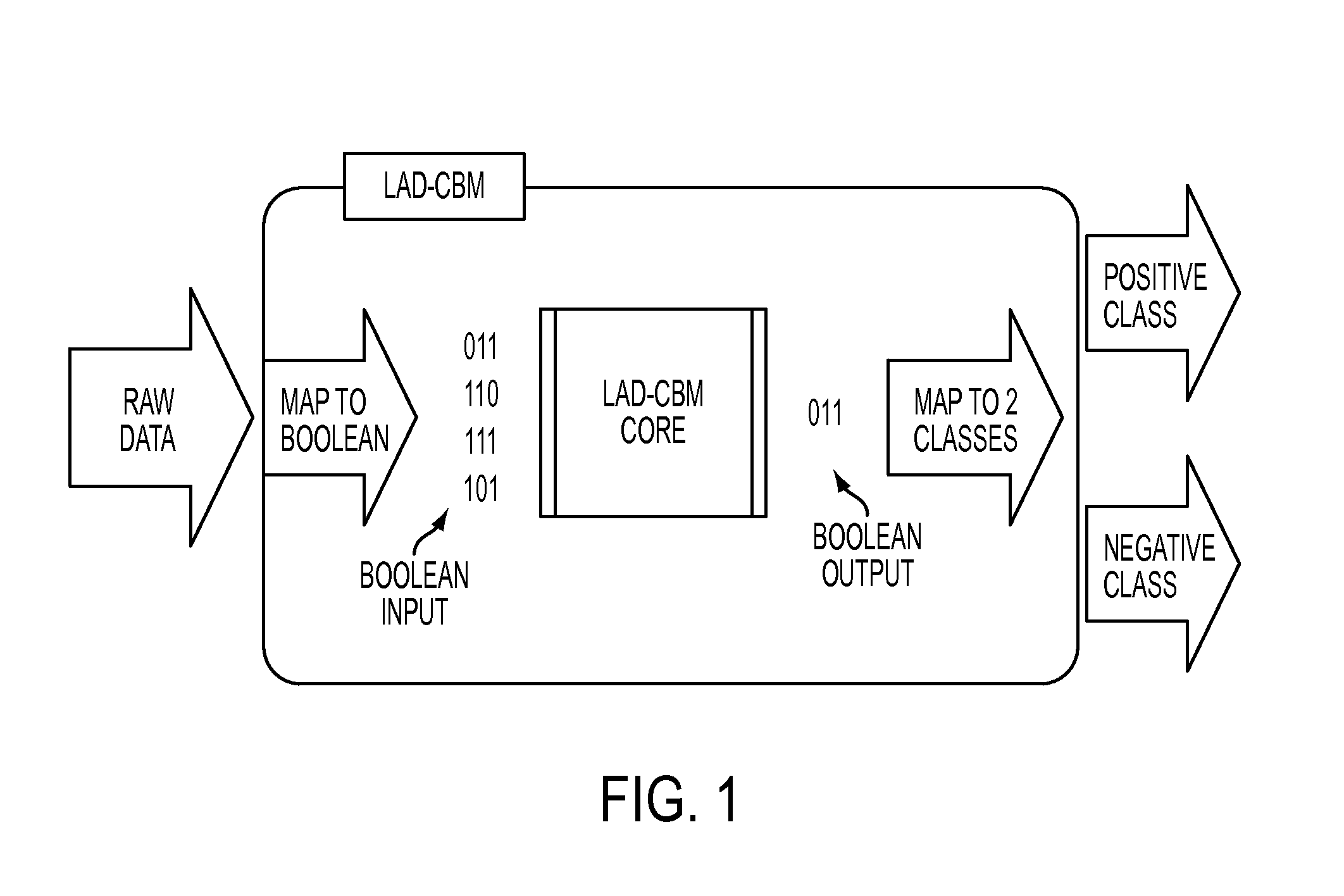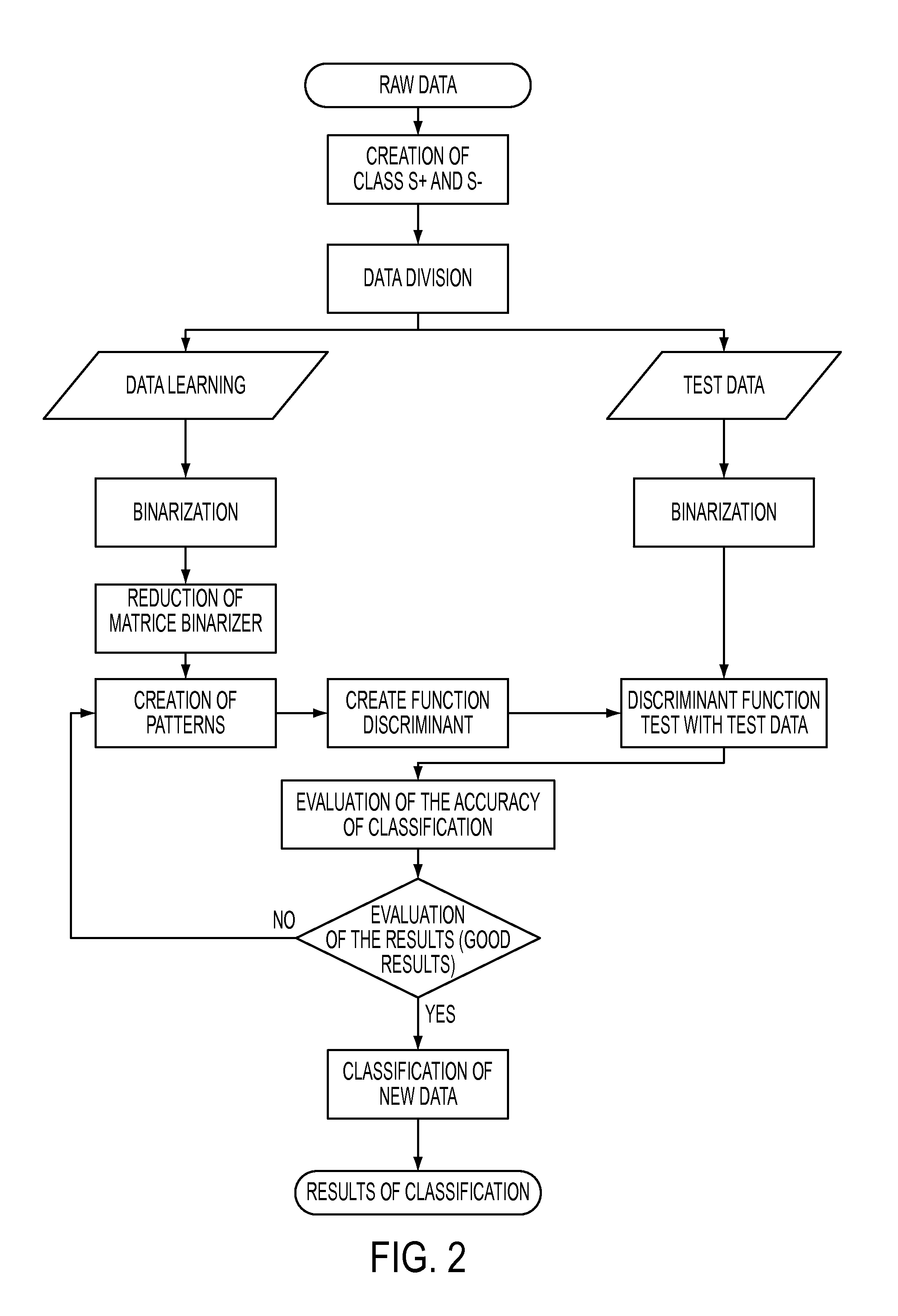Tool and method for fault detection of devices by condition based maintenance
a technology of condition-based maintenance and fault detection, applied in the field of fault detection and prediction, can solve the problems of large computational time, increased discriminating power, inconvenient, etc., and achieves the effect of reducing the cost of computation, increasing the discriminating power, and reducing the cost of operation
- Summary
- Abstract
- Description
- Claims
- Application Information
AI Technical Summary
Benefits of technology
Problems solved by technology
Method used
Image
Examples
example 1
[0133]To demonstrate the performance of LAD in the diagnosis of faults in transformers, two configurations of multilayer LAD classifiers were set and test were performed on these configurations on two sets of data obtained from other sources. The chosen configurations are similar to those setup for the other sources so as to compare the results obtained from the multilayer LAD classifier with those obtained using other techniques.
Databases
[0134]Database 1: Composed of 117 samples of defective transformers compiled from different sources. Each sample is composed of the content of 5 gases (H2, CH4, C2H6, C2H4 and C2H2) along with CO and CO2 gas content in addition to know fault states of the sample as diagnosed by industry experts using diagnostic engineering tools. In total 5 fault states are identified as per the IEC standards mentioned in section I. Of the 117 samples, 9 samples are identified as PD, 26 as D1, 48 as D2, 16 as T1 / T2, and 18 as T3.
[0135]Database 2: The second databas...
experiment 1
[0141]In this experiment, configuration 1 was used on database 1. As described above, the data was processed in four different ways to produce 4 distinct data sets. Of the 117 samples 87 were picked randomly to train the multilayer LAD classifier. The remaining 30 samples were used for testing. Four runs of training and testing were performed on each of the four processed data set. On each run the discriminatory factor l was changed to 1, 5, 10, or 20. Consequently, 16 results were obtained from this configuration. The accuracy results of this experiment are shown on FIG. 17. Each classifier is obtained using one of four processed versions of data set 1. For each processed data set, four classifiers are trained and tested by varying the discriminatory factor l.
[0142]The results of FIG. 17 show that the level of accuracy increases by increasing the discriminatory factor l. The accuracy levels obtained using Dornenburg ratio data set are highest for all levels of l. FIG. 18 shows that...
experiment 2
[0145]For this experiment, the 3 layer cascaded classifier, labeled as configuration 2 above, was trained and tested using data sets obtained from database 2. The data was processed using the four techniques described earlier in order to produce 4 distinct data sets. 50 samples were used for training the multilayer LAD classifier and 25 samples were used for testing, 4 of which are normal, 13 defective due to thermal heating, 2 defective due to high energy discharge and 6 due to low energy discharge. Before using the testing data, white noise at 5% was added to compensate for the small size of the set. The LAD based classifiers were trained at l=1, 5, 10, and 20 to investigate the effect of the modifications to the algorithm. FIG. 20 displays the results of the classification in each case. As with experiment 1, the diagnosis accuracy increased with the increase in the discriminatory factor l for every data set type. The best classification accuracy, 92%, was obtained using the absol...
PUM
 Login to View More
Login to View More Abstract
Description
Claims
Application Information
 Login to View More
Login to View More - R&D
- Intellectual Property
- Life Sciences
- Materials
- Tech Scout
- Unparalleled Data Quality
- Higher Quality Content
- 60% Fewer Hallucinations
Browse by: Latest US Patents, China's latest patents, Technical Efficacy Thesaurus, Application Domain, Technology Topic, Popular Technical Reports.
© 2025 PatSnap. All rights reserved.Legal|Privacy policy|Modern Slavery Act Transparency Statement|Sitemap|About US| Contact US: help@patsnap.com



